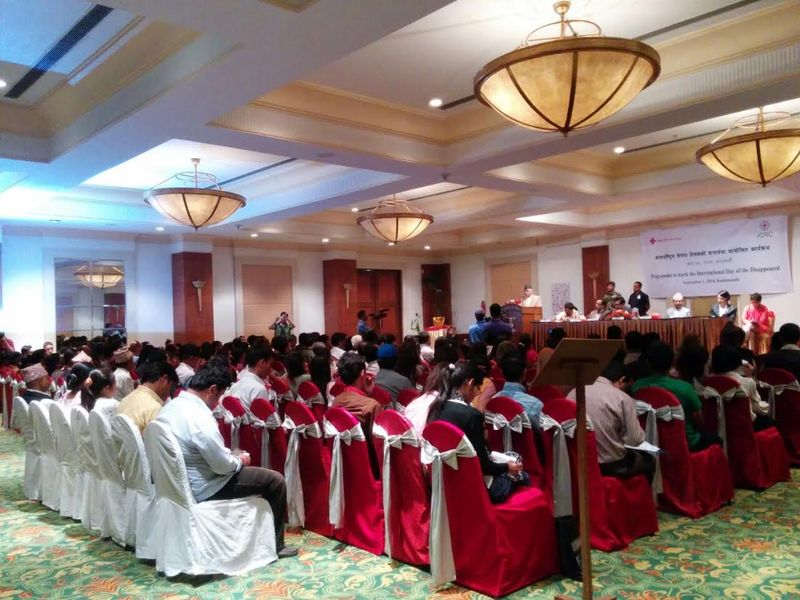To mark the International Day of the Disappeared, observed on 30 August every year, the names of 1,347 people who went missing during Nepal’s decade-long internal armed conflict (1996-2006) were published by the International Committee of the Red Cross (ICRC) and the Nepal Red Cross Society (NRCS) in Kathmandu at a commemorative function today. Over 50 district chapters of the NRCS are conducting various events all across Nepal to mark the day.
The publication, entitled Missing persons in Nepal: Updated List 2014, is the seventh edition of the list of missing persons to appear since 2007. It was jointly unveiled by Nepal minister for peace and reconstruction Narahari Acharya, who was the chief guest at the event, members of families of missing persons and other distinguished guests. The event brought together representatives of the Nepal Society of Families of the Disappeared and Missing, government officials, members of the armed and security forces, human rights organizations, civil society organizations, media and Red Cross volunteers.

Kohalpur, Banke district, Nepal. The mother of a missing person at a commemoration ceremony. Families regularly hold events to find out what happened to missing relatives and to deal with their loss. ©ICRC
“According to the ICRC, 3,777 individuals disappeared during the armed conflict. Among them, 1,347 — about one in three — are still missing,” said Dragana Kojic, head of the ICRC delegation in Kathmandu. “The aim of this publication is to bring public recognition to the families of missing persons in Nepal, and to highlight their suffering and their needs. It also constitutes an appeal to the Government of Nepal, and to all former parties to the conflict to clarify the fate and, whenever possible, the whereabouts of the missing and to ensure that all such families are included in government support programmes.”
The families need, above all, to know what happened to theirmissing relatives. The right of a family to know, enshrined in international humanitarian law and in international human rights law, must be respected. International law is clear on the matter: It is illegal to make people disappear and the next-of-kin must be informed without delay when a person is captured or detained or dies. Authorities are required to take all feasible measures to deal with the consequences of disappearances when they do occur.
“The Nepal Red Cross Society acts as the bridge between the ICRC and the families while raising the issue of missing persons among the concerned authorities. We have been expanding our capacities from the central to the district levels. Since 2010, trained Red Cross volunteers have been visiting the families of missing persons at least once every year,” said Dev Ratna Dhakhwa, the secretary-general of Nepal Red Cross Society.
The ICRC and the Nepal Red Cross Society work with national non-governmental organizations to provide psychological, economic, legal, administrative and social-cultural support for relatives of missing persons.
For further information, please contact:
Binod Kafle, ICRC Kathmandu, tel: +977 9851074295 or +977 1 4107157/4107279
Dibya Raj Paudel, Nepal Red Cross Society Kathmandu, tel: +977 9841699068 or +977 1 4285089
To preview and download the latest ICRC video footage in broadcast quality, click here.
To find out what the ICRC is doing to put an end to attacks on health workers and patients, click here.
To learn more about the ICRC’s activities in Nepal, click here.
Follow the ICRC on facebook.com/icrc and twitter.com/ICRC_nd.


